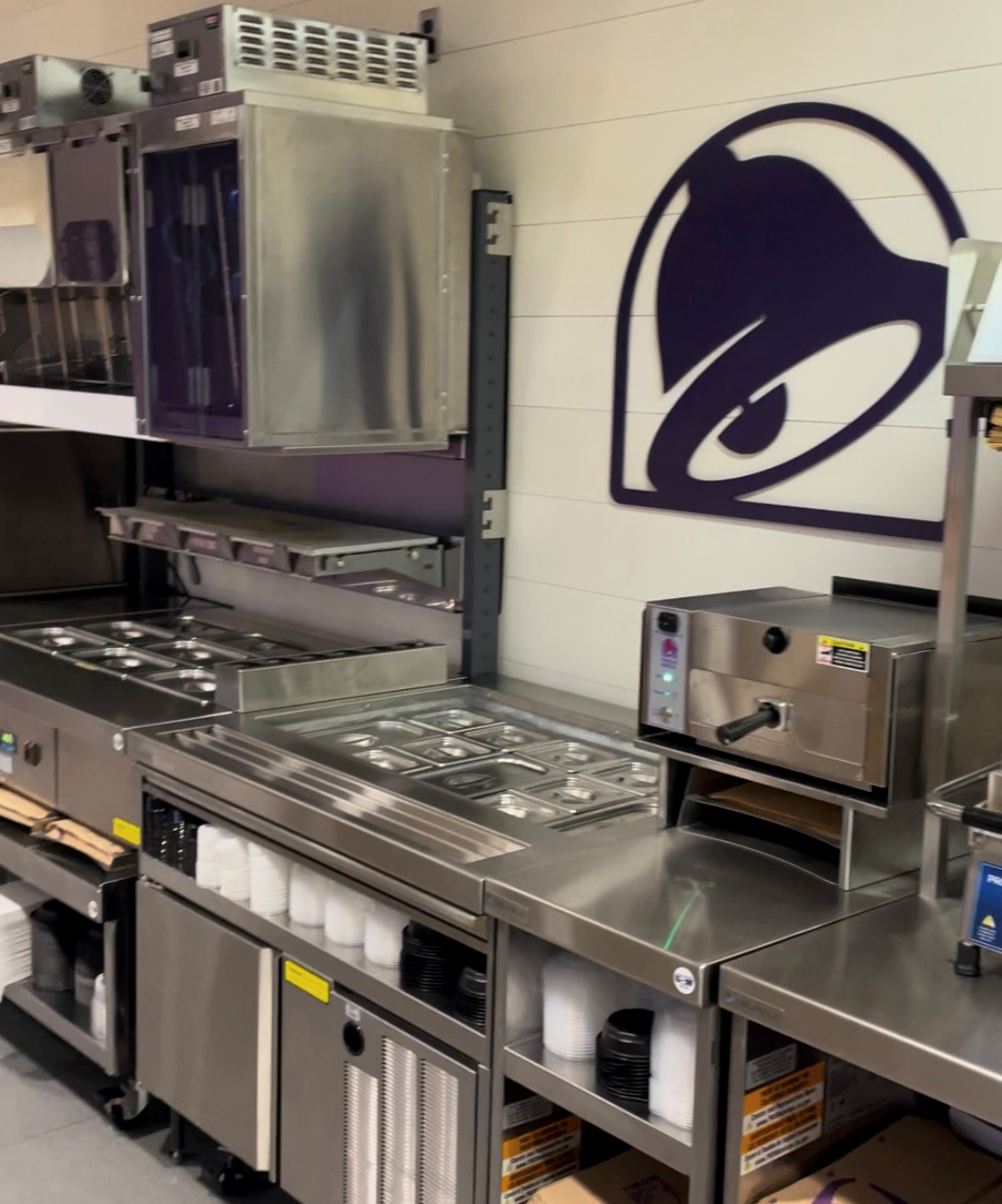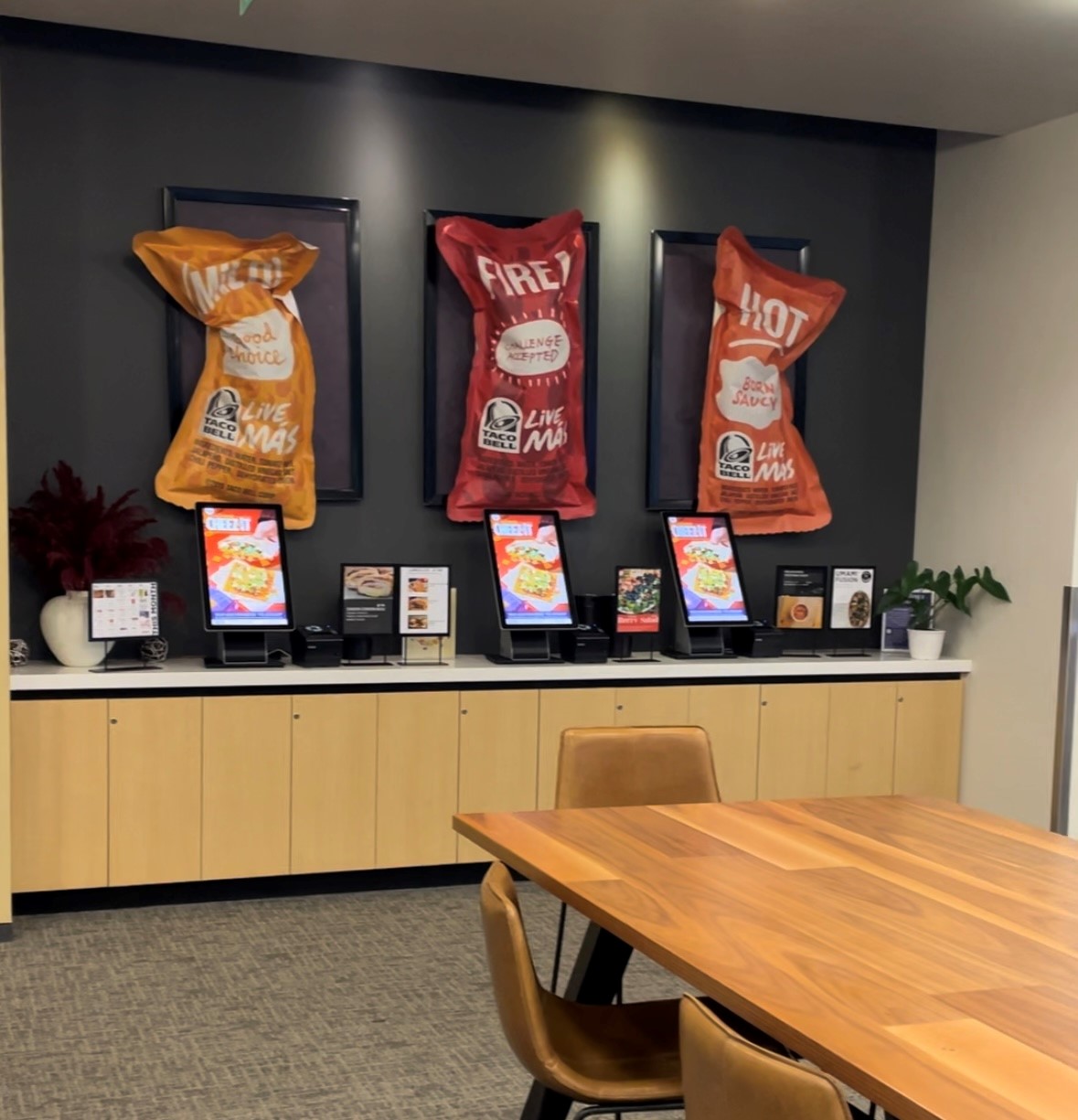Taco Bell’s innovation wheel is constantly churning and that has been especially clear in recent months after the chain announced its plans to launch at least one new product every five weeks, twice the rate of 2023.
Indeed, the chain has served up everything this year from Cantina Chicken and the Big Cheez-It Crunchwrap Supreme to Mtn Dew Baja Blast Gelato to tests featuring Tajín or focused on beverages like Churro Chillers and Agua Refrescas.
To maintain this dizzying pace, Taco Bell’s test kitchen is constantly in motion, with team members examining flavor profiles, spice indexes, crunch elements, beverage sweetness, SKU requirements, operational integration, and every other detail imaginable. During a recent visit to the brand’s Irvine, Calif.-based headquarters, vice president of product innovation Luis Restrepo and chef Brett Pluskalowski provided a peek behind their process – from casual ideation to rigorous testing – and what it takes for a product to make it to the menu systemwide, where it has a very good chance of achieving cult-like status.
 The initial space in the innovation area is an unassuming room set up to enable a blind taste test, where products are served to nearly a dozen consumers through a cubby-like hole on the other side of a wall. This process includes about 100 consumers every week, each served different orders with different features.
The initial space in the innovation area is an unassuming room set up to enable a blind taste test, where products are served to nearly a dozen consumers through a cubby-like hole on the other side of a wall. This process includes about 100 consumers every week, each served different orders with different features.
“Someone can get something that has a tortilla chip first and then they can get something that’s more of a bread crumb texture. We change the test to know what consumers think tastes the best. A lot goes into this part to figure out what the right profile is for every single product we launch,” Pluskalowski said.
There’s also a large, theater-like room where ideas and products are presented internally. And, of course there’s a full-sized kitchen to replicate the operational requirements of each launch. Taco Bell has different line configurations depending on each restaurant’s square footage, and the test kitchen takes into account each operating model to best collect team member input. That said, nothing underscores how a product is going to flow through the kitchen like serving food during peak times from an actual restaurant. That’s where in-store testing comes into play. Taco Bell leverages one or two restaurants in a market early in the process to understand what may need to be tweaked.
“The restaurants are the experts, and we go out to a restaurant to see how it’s performing and what improvements need to be made so we can make sure that it’s scalable,” Pluskalowski said.
Taco Bell uses a few different filters to know how big a test needs to be or where to go from there.
“If we feel strongly that it’s going to be a good bet for the consumer, we might speed that up and not necessarily scale up to a huge test. If it’s something we need to truly understand what it’s going to do for us, we’ll put it in a market, let it run for six weeks, eight weeks, get a good read, and then make a decision,” Restrepo said.
Notably, and perhaps unsurprisingly, Taco Bell prefers franchised locations for tests.
“We want them to believe what we believe in,” Restrepo added.
Finding products to believe in
So, how does Taco Bell find the right products for franchisees – and consumers – to believe in? It starts with a whole lot of ideation. The Taco Bell food innovation team in Irvine includes about 60 employees, from food scientists and chefs to engineers, who come up with well over 1,000 ideas a year to test.
“The filter is gigantic. We start super broad and bring different concepts, different levels of stimuli to consumers,” Restrepo said.
Those ideas are then whittled down to about 40 product launches a year, give or take a few, equating to about a 95% failure rate.
“It’s in our DNA to constantly innovate and bring new things to the world for our consumers,” Pluskalowski said. “We want to start out broad and funnel it because then we’ll learn every step of the way what is successful and what is not, what is operationally executable, what works from a flavor standpoint. We have 8,000 restaurants and we have to get these things to fit to set our restaurants up for success.”
 Those 1,000-ish ideas come from “literally everywhere,” including social listening tools, restaurant trips, street vendors, grocery trips, team member experiences, parent company Yum Brands’ Food Innovation Team, and Taco Bell’s international markets, Pluskalowski said. For the Cheez-It Crunchwrap launch, he noticed several consumers buying the snack during a single grocery trip, illustrating its popularity. He initially wanted to create a taco shell out of the cracker, but realized it was better suited to be in the middle of the Crunchwrap, at 16 times the size of an average Cheez-It. For the Cantina Chicken launch, Taco Bell simply responded to growing consumer demands on social media. That said, the brand couldn’t put just any chicken product in play.
Those 1,000-ish ideas come from “literally everywhere,” including social listening tools, restaurant trips, street vendors, grocery trips, team member experiences, parent company Yum Brands’ Food Innovation Team, and Taco Bell’s international markets, Pluskalowski said. For the Cheez-It Crunchwrap launch, he noticed several consumers buying the snack during a single grocery trip, illustrating its popularity. He initially wanted to create a taco shell out of the cracker, but realized it was better suited to be in the middle of the Crunchwrap, at 16 times the size of an average Cheez-It. For the Cantina Chicken launch, Taco Bell simply responded to growing consumer demands on social media. That said, the brand couldn’t put just any chicken product in play.
“If consumers want a specific protein, we’ll test it. We’re looking at the trends but developing the products that are unique to us,” Restrepo said. “There has to be a balance of authenticity that it’s coming from Taco Bell because that’s what our customers want. How do we fuse what inspires us with what is core to our brand?”
The Cheesy Street Chalupa launch in July is another example of how the brand strikes this balance. Restrepo made it a point to note the product was inspired by street vendors, but Taco Bell didn’t want to come across as pretending to be part of that culture.
“That is a culture we massively respect and support, but it’s a source of inspiration where we find the balance of that with us,” he said. “Street food has had this really cool evolution, almost like a badge of discovery. It is the best representation of people who are ahead of a trend. We look at street vendors as magicians of culinary – people who really understand flavor fusions.”
Typically, Taco Bell’s innovation team prefers to be ahead of trends, but the reality is, everybody must play catch up at some point, Pluskalowski said. An example here is with beverages, an exploding category with high demand to support its growth. Taco Bell is experimenting more in this space to meet that demand with products like Limonada Freeze and the Dulce de Leche coffee.
“We want to make our beverages just as iconic as our food,” Taco Bell’s chief marketing officer Taylor Montgomery said in a statement earlier this year. But, again, the point is to make those beverages distinctly Taco Bell. Its Churro Chillers, for example, have been in test in several markets and features a blended sweet shake topped with a layer of cold foam and churro crumbles.
“This new consumer base, especially Gen Z, they love to explore, they want new flavors, but we need our twist on things. What is in the heart of what's authentically Mexican, but also the heart of Taco Bell? That’s where we bridge the gap on uniqueness,” Pluskalowski said.
Competitive landscape is getting even more intense
Achieving such uniqueness is more critical than ever as the competitive set continues to intensify – in chicken, in beverages, in Mexican-inspired food, in desserts, in everything. With such a swiftly evolving backdrop, driven by increasingly sophisticated and explorative consumers, sometimes it’s hard to be disciplined when innovating. Restrepo said Taco Bell’s process is guided by “constantly listening” to its consumers.
“They let us know where there are opportunities in our menu that we can fill, and if they’re going for new trends, we want to make sure we’re playing there,” he said. “The other piece is also about being choiceful – not to be everywhere just to be everywhere, but make sure that we have the right to win. This is the most rapidly evolving consumer landscape we’ve ever seen, so it’s about making sure we’re meeting the needs of the consumer but also being protective of our DNA.”
Where does Taco Bell go from here?
As we barrel toward the end of its busiest innovation year yet, it’s important to note that Taco Bell isn’t innovating to achieve a specific number next year or outpace what it launched this year. Instead, the team will continue to identify opportunities in the menu, like chicken and beverages, and it will continue to keep a constant finger on the pulse of what the consumer wants.
“That’s our number one filter – doing the right thing for the consumer and then for team members,” Restrepo said. “We set a really high bar this year, but because of that, we learned a lot as well, so that is starting to shape what next year looks like. We’ve reached a point where we have so much latitude to explore. We take some big swings now that we probably wouldn't have before. It's been so fun.”
Contact Alicia Kelso at [email protected]





